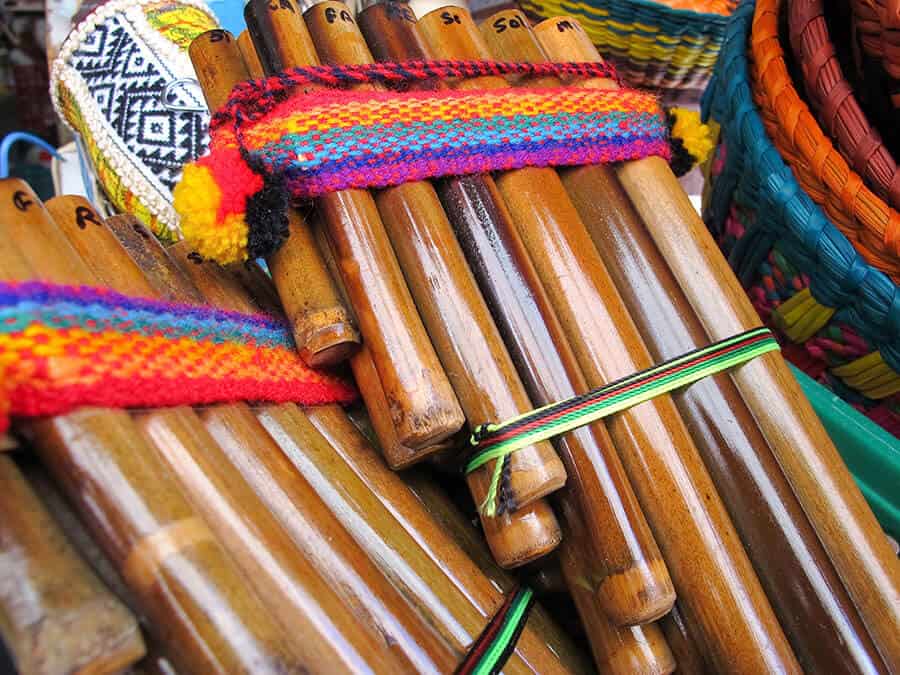With the traditional roots of Latin history spreading throughout the music industry, is old Andean Music still embraced and favored in today’s modern society? With the trendy and heavily influenced nature of pop music, Andean music can surface in many musical outlets. The duties of an artist surrounding the preservation of cultural appreciation are apparent.
Culture can be a driving force to molding the genres and ideas of music. Music can even be found as the focal point for explaining the historical or pivotal moments of countries’ dynamic upbringings. In today’s society, it is hard to find the core past influences hiding in modern music. Is the next generation familiar with the history of cultural music? Do they hear the influence? Is it important for the next generation to conserve cultural music? The answer isn’t quite simple. In the fast-evolving world of music, the vast majority of musical endeavors are created today with underline incorporations of past musical history.
Some musicians carry the history of music on their sleeves, feeling the need to pay respect and homage to music done in past years and centuries. Other musicians don’t feel a heavy push on upholding these values and push the need to morph musical genres into a new experimental nature. However, can the nature of this implication be the root for many stylings leaving the face of the earth? Notions surrounding these puzzling questions reflect the power and structure of Andean Music.
The Origins
Originating in the Andes region of South America, Andean is one of the many styles of Latin music. Many melody structures and indigenous chants were developed by Quechuas and Aymaras, which both derived from Peru and Bolivia. Preceding European interaction, the Inca Empire was the focal point which inspired the facets of Andean musical interpretation. With the fusion of Spanish music from Ecuador, Peru, and Bolivia, a rhythmic flow helped shape the musical texture today. Having a more popular reaction among original populations, is the historical outer genre maintained into the current dawn of time?

My fellow musician friend from Bolivia, Leonardo Garcia Viruez, expressed his view of the current cultural music and the traditional influences of Andean music, “Actually there are some good bands from South America that keep the sound, even some pop bands, but in my opinion in the last years it was decreasing in the music scene. One does not hear or listen to as much ’traditional’ sound as before”.
Andean music found a strong push of influence through the neo folk stylings of Nueva Cancion. During the 1960s, the musicians of Nueva Cancion truly embodied the purity of the music genre. Through the impact movement of Nueva Cancion, Andean music found itself revived and nurtured throughout Latin America, which created a cultural recognition for the once lost genre.
Andean Musical Instrumentation
The instrumentation of specific instruments molds the essence of a genre. Ancient regional instruments such as the siku and antara create the core of the panpipes group. These instruments are constructed from reeds found in various lakes of South America. Tuned in either diatonic and pentatonic registers, sikus are played with two rows of canes wrapped whole heartedly. The antara is constructed from one single row, forming the ability to play full scales.
The playing of a larger Siku, Toyo, allows two performers to share a melodic system. Even in contemporary Andean music, playing in “hocket” (the voicing of notes between two musicians) creates a distinct recognition. Flutes called Quenas, remain a traditional staple of the music’s instrumentation, made up of similar reeds as the siku. Usually played in dry season, Quenas have family members of an opposite nature. Tarkas and Pinkillos are played in wetter seasonal environments. Drums and panpipes are commonly used during holidays and celebration situations.
Listen to Andean music Now!
Andean Music Influence
Andean culture and society shifted in the twentieth century with the nationalistic revolution of 1952 in Bolivia, a monumental episode which brought to the forefront issues surrounding rights and the awareness of social impact. With a new government developing, radio stations and the Bolivian Ministry of Education began creating broadcasting in Quechua and Aymara.
The biggest growth of Andean music occurred in the 1970s. Throughout the Andean regions, many groups formed to embody the beautiful native musicality. Areas such as Peru, Ecuador, Colombia, and Argentina still reminisce about the beginnings and push to nurture Andean music. Andean music lives in cooperation with other offspring of Latin music. San Juanito of Ecuadorian origins; Kantu, the ancient stylings of Peru; and Carnavalito remain the basis of the many influences on the whole body of Latin music. Tinku originated from rigorous sacrifice for the earth to optimize good fortune. Cumbia (originated off the coast of Columbia) adapted from “Chicha” from Peru, incorporates historical sounds while mixing electric bass guitars and electronic percussion to consummate an authentic sound.
Los Kjarkas is one of the most popular Andean folk musical bands in Bolivian history. The band falls under the various influences of Tuntuna, Carnavales, and Saya. The group’s lead singer/songwriter, Gonzalo Hermosa González, formed the dynamic band with his brothers, Elmer and Ulises Hermosa Gonzalez, in the mid- 1960s. From 1965 to the present time, the band has managed to maintain the historical sounds of Andean Music. The Los Kjarkas track “Llorando Se Fue” became a mainstream hit, being referenced in multiple popular tracks such as “On the Floor” by Jennifer Lopez. Modern interpretations from bands such as Octavia, Kusillo, and Alcoholika La Christo show the pure influences of older Andean Music.
The action of preserving the cultural music phenomenon is seen in some musical attributes. This is a good sign that Andean Music is still to be prevalent in some musical avenues and can be cultivated and grown for years to come. With the musical history surrounding Andean Music, Artists should appreciate the foundations of where music has come from. This expression allows cultures to still pulse within society. It is an artist’s duty to recognize origins and pay respect in a creative way. But it’s important for the current generation to seek knowledge in the musical past. It is exciting to conserve historical music and embrace its ancestry. Hopefully for years to come, styles such as Andean music will continue to influence modern cultures in various ways.
More music reviews from the author here.
Photos: Shutterstock
Support us!
All your donations will be used to pay the magazine’s journalists and to support the ongoing costs of maintaining the site.
Share this post
Interested in co-operating with us?
We are open to co-operation from writers and businesses alike. You can reach us on our email at [email protected]/[email protected] and we will get back to you as quick as we can.










